When businesses talk about HR transformation, one question always comes first:
“What is an HRM System/Software, and why do we need one?”
In this blog, we’ll break down that question into a series of answers, exploring not only what HRMS means but also how OrangeHRM sets the benchmark by combining traditional HR tools with cutting-edge AI-powered features.
As an expert in HRIS (Human Resource Information Systems) and HRMS (Human Resource Management Systems) software, I've spent over a decade consulting on implementations for global organizations. HRMS isn't just a tool—it's a strategic enabler that integrates people data with business intelligence, fostering efficiency and innovation.
With the global HR software market projected to reach $54.19 billion in 2025, up from $50 billion in 2024, the adoption of these systems is accelerating at a compound annual growth rate (CAGR) of 8.38%. This growth underscores the shift from manual HR processes to automated, data-driven platforms that address modern workforce challenges.
What Is an HRM System/Software?
An HRM System (Human Resource Management System), sometimes called HR software or HRIS, is a digital platform that helps organizations manage their people, policies, and processes. It consolidates HR functions—such as recruitment, leave management, performance tracking, payroll integrations, and workforce analytics—into a single system.
At its core, an HRMS automates administrative tasks, ensures compliance with labor laws, and provides actionable insights through data aggregation.
From my experience, a robust HRMS goes beyond basic record-keeping. It serves as the backbone for strategic HR, enabling predictive analytics and employee self-service portals. For instance, modern systems use cloud-based architecture for scalability, allowing seamless updates without downtime.
Expert opinions highlight that in 2025, HRMS platforms are evolving to incorporate generative AI, which can automate up to 37% of workforce tasks, according to HR leaders surveyed by Gartner. This integration transforms HR from a reactive function to a proactive partner in business strategy.
Modern HRMS platforms like OrangeHRM go beyond administration. They enable data-driven, AI-assisted, and strategic HR practices—turning HR into a powerhouse that influences organizational growth and culture.
OrangeHRM, as an open-source and enterprise-grade solution, offers modules for people management, talent acquisition, compensation, and culture building, with features like absence tracking and reporting analytics. Reviews from platforms like Capterra praise its affordability and customization, with an average rating of 4.5 out of 5 from over 5,500 users, emphasizing its ease of use for global teams.
Why Do Companies Need an HRM System?
Without an HRMS, HR departments are often overwhelmed with manual tasks: updating spreadsheets, chasing approvals, and reconciling data from multiple sources. This inefficiency not only drains resources but also increases error rates—studies show manual HR processes can lead to up to 40% more compliance violations.
An HRM system addresses these challenges by:
-
Automating routine HR tasks, such as onboarding paperwork and payroll calculations, which can reduce administrative time by 50-70%, as per industry benchmarks.
-
Providing a centralized hub for employee data, ensuring real-time access and reducing data silos.
-
Enhancing compliance across multiple regions through built-in regulatory templates and audit trails.
-
Offering real-time visibility into workforce trends, like turnover rates and engagement scores.
-
Delivering AI-driven insights for better decision-making, such as predicting employee churn with 85% accuracy in advanced systems.
Data from 2025 indicates that the HR technology market is booming at a CAGR of 7.5%, expected to grow from $23.98 billion in 2023 to higher valuations, driven by automation needs.
Expert Ron Schmelzer from Forbes notes that AI in HR streamlines processes and enhances employee experiences, making HRMS indispensable for competitive advantage.
SMBs are leading adoption, accounting for 80% of HR software demand in 2024, favoring flexible tools like OrangeHRM.
With OrangeHRM, HR professionals save time, reduce errors, and focus on what matters most: people and strategy.
Its open-source version offers rich features at no cost, making it accessible for startups, while enterprise editions provide advanced scalability. In my opinion, companies ignoring HRMS in 2025 risk falling behind, as 79% of small businesses already use such software, jumping to 90% for mid-sized firms.
What Makes OrangeHRM Different?
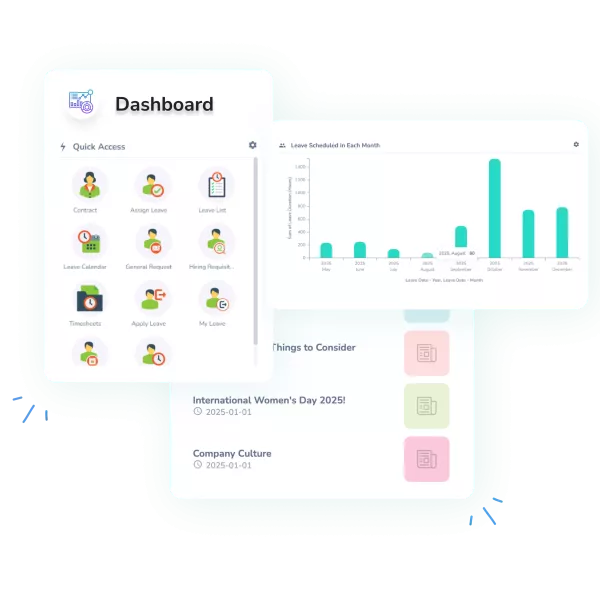
OrangeHRM is more than a standard HRMS—it’s a comprehensive, global-ready HR solution trusted by organizations in over 100 countries.
What sets it apart? Its blend of open-source flexibility with enterprise-grade security and features. Unlike rigid systems, OrangeHRM allows extensive customization without coding expertise.
-
Configurability at Scale: Tailored leave, compliance, and workflows for multiple countries, supporting diverse regulations from GDPR in Europe to labor laws in Asia.
-
Integration Power: Seamless connectors with payroll providers like ADP and other enterprise tools, including APIs for custom integrations.
-
AI-Driven Efficiency: Built-in AI capabilities that assist in recruitment, performance, surveys, and day-to-day HR tasks.
-
Mobile-First Experience: HR tasks managed on the go with OrangeHRM’s mobile app, enabling anytime access.
Expert reviews on G2 commend its streamlined employee management and praise features like performance tracking.
In 2025 trends, HR software like OrangeHRM aligns with the push for unified systems, as noted by PeopleHR experts, who emphasize optimizing AI and supporting hybrid work.
Strengths include its cost-effectiveness—free open-source plan—and comprehensive modules covering 360-degree feedback, alerts, and API access. One reviewer highlighted how it optimizes HR efficiencies and centralizes data, reducing operational costs by up to 30% in some cases.
What HR Functions Can OrangeHRM Handle?
Let’s break this down into questions HR leaders often ask, expanding with insights and data.
How Does OrangeHRM Handle Leave Management?
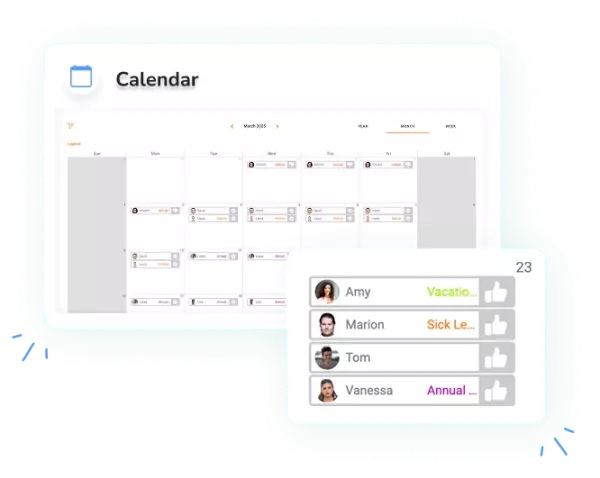
OrangeHRM’s leave engine is designed for real-world global complexity. Key capabilities include:
-
Highly configurable leave rules — accruals, carry-forwards, probation rules, pro-rata calculations, half-day/partial-day policies, and tenure-based entitlements.
-
Country-ready templates — prebuilt statutory and common PTO rules that you can activate per country and then tweak for local specifics.
-
Approval workflows & visibility — multi-level approvals, delegated approvers, conditional auto-approvals (e.g., small requests under X days), and role-based visibility so managers see only what they need.
-
Self-service — employees request leave from desktop or mobile; they see balances, remaining entitlements, blackout dates, and alternative date suggestions.
-
Integration with roster and payroll — approved leave automatically adjusts rosters and payroll inputs to prevent payroll errors and understaffing.
-
Reporting & audit trails — exportable leave reports, audit logs for compliance, and alerts for anomalies (excessive carryforwards, unusual patterns).
-
AI assistance (Citra) — employees can request/approve leave by chat, check balances, and soon get team-aware planning suggestions that minimize coverage gaps.
Practical benefits: fewer payroll disputes, faster approvals, and improved compliance across geographies.
How Does OrangeHRM Manage Time and Attendance?
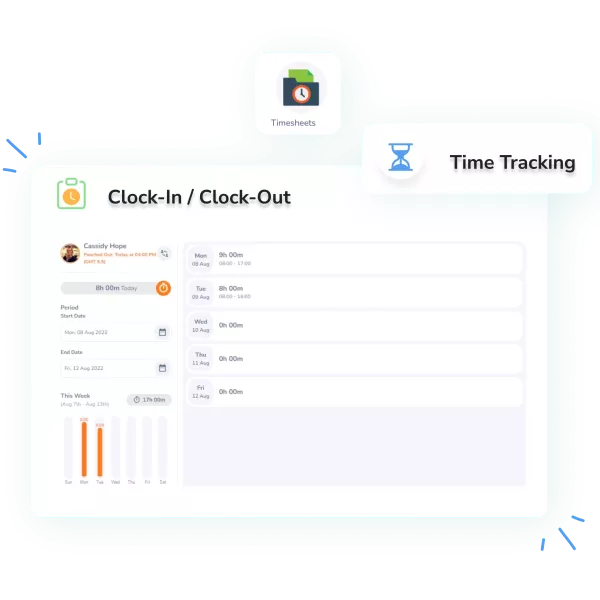
OrangeHRM provides real-time and accurate time capture with rules that reflect modern work patterns:
-
Multiple clocking methods — web punch, mobile punch (with optional geolocation), kiosk terminals, and integrations with biometric devices.
-
Flexible shift & rule support — rounding rules, grace periods, overtime thresholds, shift differentials, and automatic break enforcement.
-
Timesheet automation — automatic timesheet generation from punches, manager approvals, and corrections workflows.
-
Alerts & exceptions — notifications for missed punches, overtime thresholds, or suspicious patterns.
-
Payroll-ready outputs — time data maps to payroll components (regular hours, OT, night differentials) to reduce reconciliation work.
-
Analytics — utilization, tardiness, absenteeism trends, and productivity overlays.
-
Pattern recognition (AI-ready) — the platform flags unusual absenteeism or schedule drift early, enabling proactive manager intervention.
Manager tips: configure geofencing for field teams, set automated reminders for missing punches, and use exception reports weekly to keep payroll clean.
What About Scheduling and Rosters?
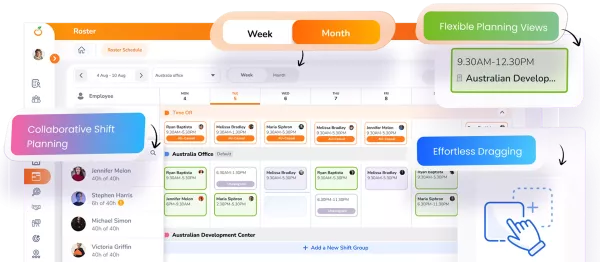
OrangeHRM’s scheduling (roster) capabilities are built to align staffing with demand while protecting employee fairness:
-
Template & pattern-based scheduling — create reusable shift groups (early/core/late/peak) and assign people to patterns.
-
Drag-and-drop roster builder — build weekly or monthly rosters quickly and edit in a few clicks.
-
Publish/unpublish workflow — draft rosters visible to managers only; one-click publish notifies staff by email/mobile.
-
Swap & cover management — employees request swaps, managers approve, and the system enforces coverage rules automatically.
-
Coverage & compliance checks — live validation for minimum coverage, rest periods, maximum hours and local legal rules.
-
Integration with leave and time — conflicting leave requests are visible during rostering; published rosters feed time capture.
-
Forecast & analytics — historical demand plus staffing reports help optimize labor costs and reduce both understaffing and overstaffing.
Why it matters: better rosters improve service, reduce burnout, and cut unnecessary labor spend.
How Does OrangeHRM Support Recruitment?
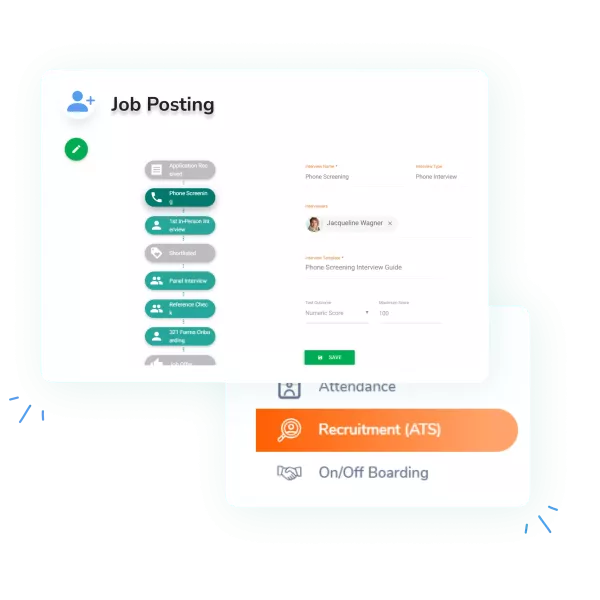
OrangeHRM’s ATS and talent tools are designed to shorten time-to-hire and improve quality of hire:
-
End-to-end ATS — job requisition, posting, candidate pipelines, interview scheduling, feedback collection, and offer management.
-
Resume parsing & search — extract key fields and enable quick keyword/skill searches across applicants.
-
Job Fit Scoring (AI) — candidate-to-job matching scores that surface best-fit applicants and summarize resume highlights for faster screening.
-
Collaboration features — shared interview feedback forms, scorecards, and hiring-stage approvals to reduce bias and accelerate decisions.
-
Source analytics — track which job boards or campaigns deliver highest quality candidates.
-
Compliance & record-keeping — consent management, EEO reporting, and secure candidate records.
Recruiter best-practice: pair job-fit scores with structured interview rubrics to preserve human judgment while reducing screening time.
How Does OrangeHRM Improve Onboarding?
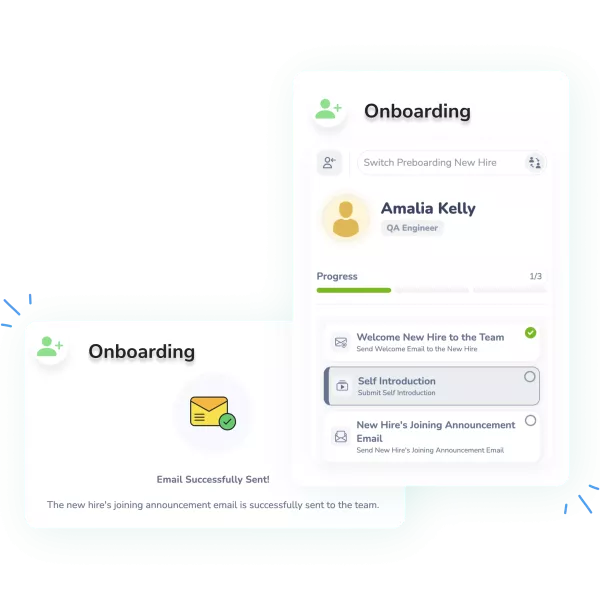
Onboarding is automated and personalized to increase new-hire ramp and engagement:
-
Preboarding flows — paperwork, equipment requests, ID verification, and welcome comms before Day 1.
-
Task-driven checklists — role-based tasks for IT, manager, and new hire with progress tracking.
-
Digital forms & e-signatures — collect tax forms, contracts, and policy acknowledgements securely.
-
Buddy programs & orientation scheduling — built-in workflows to assign mentors and set orientation calendars.
-
Goal & training linkage — immediate suggestions for first-quarter goals and required training mapped to the role.
-
Analytics — time-to-productivity metrics and onboarding satisfaction surveys.
Outcome: faster ramp, lower first-90-day attrition, and clearer expectations.
How Does OrangeHRM Enhance Performance Management?
![]()
OrangeHRM supports continuous, evidence-based performance with tools that drive development:
-
Goal setting & tracking — cascade goals from company level to teams and individuals, with progress dashboards.
-
Continuous feedback & check-ins — lightweight, regular feedback capture and check-in templates to replace annual-only reviews.
-
360-degree reviews — collect multi-rater input (peers, managers, direct reports) and consolidate into structured reviews.
-
Appraisal summarization (AI) — Citra reads evaluator comments and proposes objective summaries, categorizes sentiment, and highlights themes for managers to review.
-
Goal generation assistance (AI) — role-based SMART goal suggestions aligned to past performance and organizational priorities.
-
Learning & development integration — link performance outcomes to recommended training and career paths.
-
Calibration & auditability — calibration tools to align ratings, plus audit trails for fairness and compliance.
Manager guidance: use AI summaries to save time but validate them—AI proposes, humans decide.
Can OrangeHRM Help with Surveys?
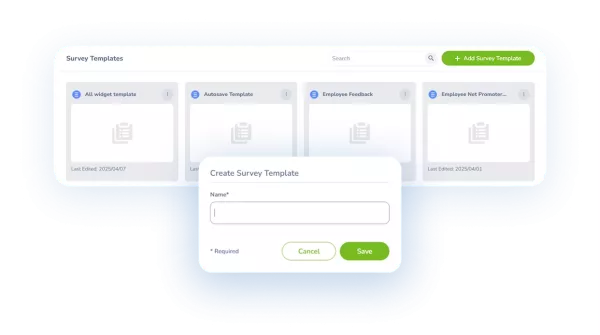
Yes — OrangeHRM makes data collection simple and actionable:
-
Pulse & engagement surveys — scheduled or ad-hoc with templates and anonymous options.
-
Actionable reporting — real-time dashboards, segmentation (by team, location), and trend analysis.
-
AI-assisted survey creation — create quick pulse questions via chat (Citra), improving response rates.
-
Closed-loop follow-up — convert survey findings into action plans and track remediation.
Use case: run quarterly micro-pulses after major changes (reorgs, policy shifts) to detect morale dips early.
How Does OrangeHRM Handle Grievances?
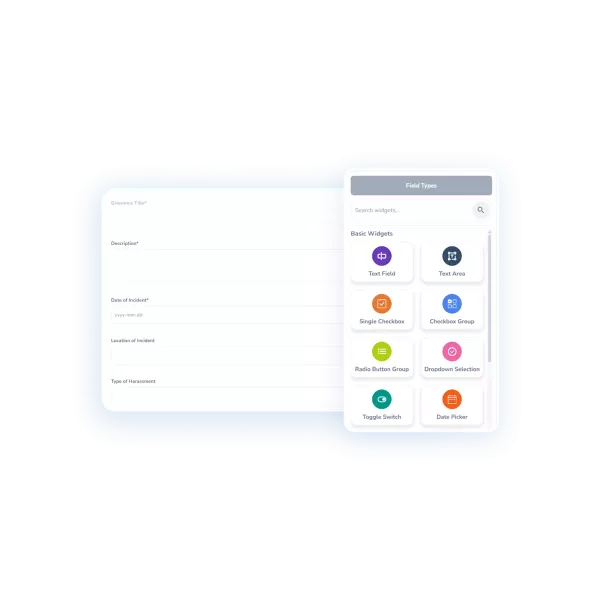
OrangeHRM treats grievances with confidentiality, process, and fairness:
-
Secure intake — employees submit cases through a confidential portal.
-
Case management workflows — triage, assign investigators, track timelines, and escalate as needed.
-
Evidence & notes storage — centralized repository with access controls.
-
Outcome tracking & reporting — ensure consistent resolution and compliance.
-
AI categorization (roadmap) — prospective features to tag and route grievances for faster handling while preserving human oversight.
HR practice: document each step, keep complainants informed of status, and use anonymized reporting to spot systemic issues.
Does OrangeHRM Provide Analytics?
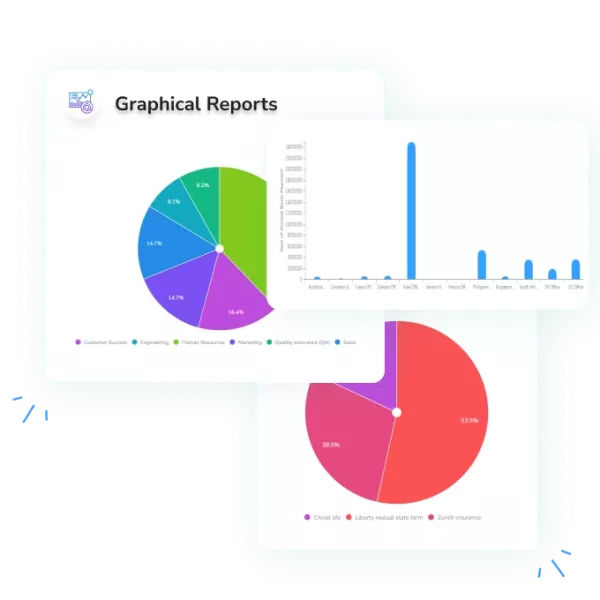
Yes — analytics is a core strength:
-
Pre-built dashboards — headcount, turnover, absence, time utilization, hiring funnel, performance distributions.
-
Custom reporting — build reports for any HR KPI and schedule automated distribution.
-
Predictive insights — risk-of-turnover flags, absence forecasts, and staffing demand signals.
-
Export & integrate — data connectors to BI tools for deeper financial or operational analysis.
Tip: set a small set of HR KPIs (e.g., time-to-hire, turnover of critical roles, schedule stability) and monitor weekly.
What About Mobility and Accessibility?
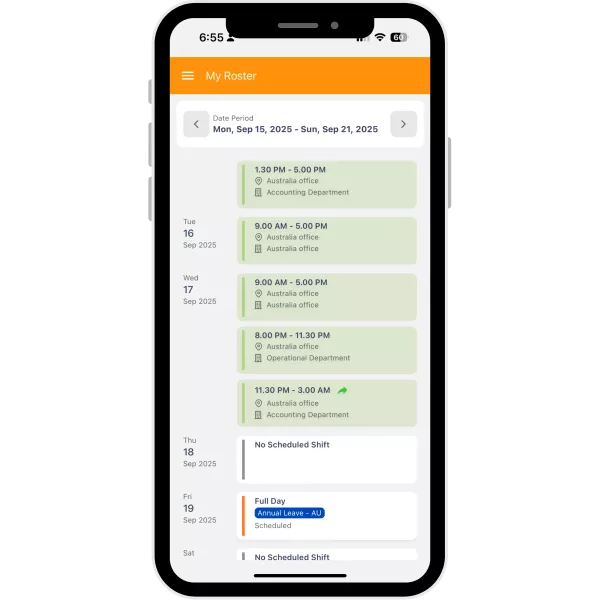
OrangeHRM’s mobile experience brings HR into employees’ pockets:
-
Mobile approvals & requests — approve leave, time off, or shift swaps on the go.
-
Push notifications — roster publishes, approvals, or policy updates.
-
Mobile time capture — clock in/out with location if needed.
-
Conversational AI (Citra) — chat-driven interactions for common requests reduce friction and support a distributed workforce.
Practical note: mobile-first reduces email clutter and speeds decision cycles for frontline workers.
Final Thoughts: Why OrangeHRM for 2025 and Beyond?
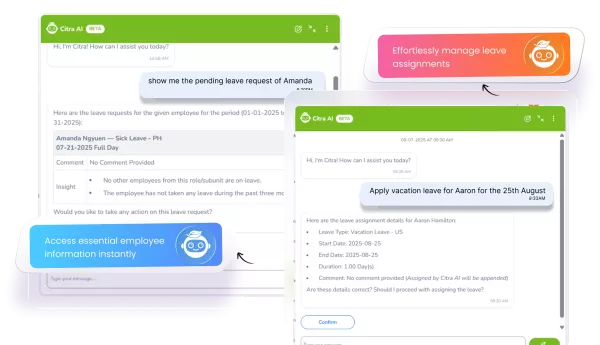
An HRMS is no longer just about digitizing records. It’s about creating a smarter, AI-driven HR ecosystem.
The market is set to hit $410 billion in 2025, growing to $740 billion by 2030.
OrangeHRM stands out because it:
-
Handles the complexities of global HR with ease, as trusted by users worldwide.
-
Provides AI-powered assistants like Citra to make HR conversational.
-
Blends administrative efficiency with strategic impact, with features praised in reviews.
